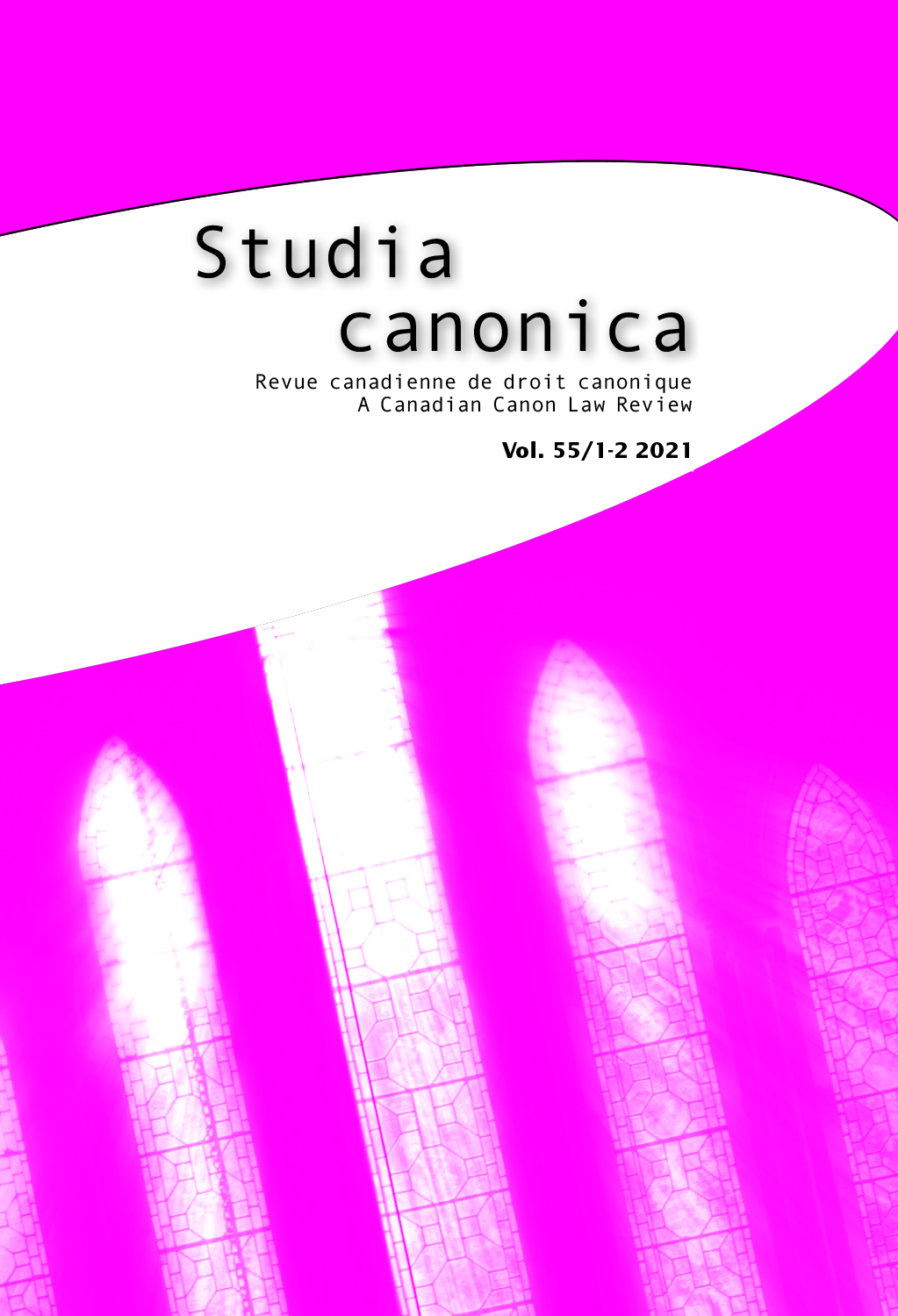 previous article in this issue previous article in this issue | next article in this issue  |

Preview first page |
Document Details : Title: Setting Limits on the Application of the Eastern Code to the Latin Church Author(s): ABBASS, Jobe Journal: Studia Canonica Volume: 51 Issue: 1 Date: 2017 Pages: 25-54 DOI: 10.2143/STC.51.1.3220889 Abstract : Interpreting the meaning and scope of CCEO canon 1 is essential to an understanding of the interrelationship of the Eastern and Latin Codes. Initially, some canonists interpreted Eastern canon 1 very narrowly so as to oblige the Latin Church only when explicitly mentioned in nine CCEO canons. However, by way of a 2011 Explanatory Note regarding CCEO canon 1, the Pontifical Council for Legislative Texts affirmed that 'besides the canons in which the Latin Church is ‘explicitly’ named, there are also other canons of the same Code in which it is included ‘implicitly,’ if one takes into account the text and context of the norm'. As a result, the Pontifical Council held that the Eastern Code’s express use of the expression 'Church sui iuris' implicitly included the Latin Church and the Council seemed to open the door to an even wider application of the Eastern Code to the Latin Church ex natura rei in the context of interecclesial relations. Still, the interrelationship of the Codes was never meant to be completely open-ended. Given the Legislator’s choice to promulgate two different Codes, the Eastern and Latin Codes are still separate and distinct even though some CCEO norms will apply to the Latin Church in the context of interecclesial relations. The promulgation in 2016 of De concordia inter Codices highlights the unique status of each Code and effectively sets limits on the application of one or the other in a number of ways. In this study, the author examines the motu proprio from the perspective of its implicit effect on limiting the application of the Eastern Code to the Latin Church. Part 1 deals with the norms added to the Latin Code to mirror those already found in the Eastern Code. Part 2 treats other unique Eastern norms which were not added to the Latin Code. Finally, part 3 compares parallel norms of the Codes that remain mutually different in some significant respect. L’interprétation du sens et de la portée du canon 1 du Code des canons des Églises orientales (CCEO) est essentielle à la compréhension de l’interrelation des Codes oriental et latin. Au début, certains canonistes avaient interprété le canon 1 du Code oriental de manière stricte afin d’obliger l’Église latine seulement lorsque celle-ci était mentionnée explicitement dans neuf canons du CCEO. Cependant, en 2011, dans le cadre d’une note explicative concernant le canon 1 du CCEO, le Conseil Pontifical pour les Textes Législatifs a affirmé que «outre les canons dans lesquels l’Église latine est 'explicitement' nommée, il existe aussi d’autres canons du même Code dans lesquels elle est incluse 'implicitement', si l’on tient compte du texte et du contexte de la norme». Par conséquent, le Conseil pontifical a estimé que l’utilisation expresse dans le Code oriental de l’expression «Église sui iuris» impliquait de manière implicite l’Église latine. De plus, le Conseil semblait ouvrir la porte à une application encore plus large du Code oriental à l’Église latine ex natura rei dans le contexte des relations interecclésiales. Pourtant, l’interrelation entre les deux Codes n’a jamais été censée être complètement ouverte. Étant donné le choix du législateur de promulguer deux Codes différents, les Codes oriental et latin sont encore séparés et distincts même si certaines normes du CCEO s’appliqueront à l’Église latine dans le contexte des relations interecclésiales. La promulgation en 2016 de De concordia inter Codices met en évidence le statut unique de chaque Code et définit effectivement des limites sur l’application de l’un ou l’autre des Codes de plusieurs façons. Dans cette étude, l’auteur examine le motu proprio du point de vue de son effet implicite sur l’application limitée du Code oriental à l’Église latine. La première partie traite des normes ajoutées au Code latin pour refléter celles que l’on retrouve déjà dans le Code oriental. La deuxième partie traite d’autres normes orientales uniques qui n’ont pas été ajoutées au Code latin. Enfin, la troisième partie compare les normes parallèles des Codes qui restent différentes d’un point de vue significatif. |
|


